Moving to South Dakota: Discover the Mount Rushmore State
We created this guide for moving to South Dakota to help those who are in their very early stages of researching where they’d like to move. So, what exactly do you need to know before moving to South Dakota? We’ve compiled some of the most important items you should consider when making this big decision. According to 2020 Census data, South Dakota was one of the few states that saw significant population growth in the last decade in terms of population, with an impressive 8.7% growth in population. So, is South Dakota the right state for you to move?
What You Need to Know about South Dakota’s Geography
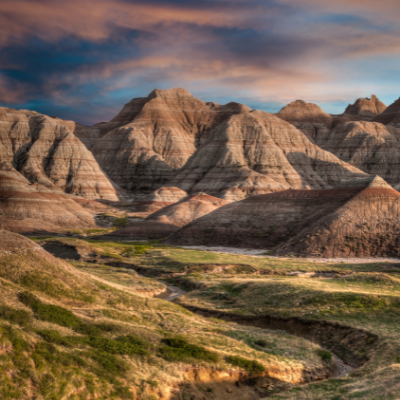
South Dakota is in the upper Midwest Minnesota to the east, Iowa to the southeast, Nebraska to the south, Wyoming to the west, Montana to the northwest, and North Dakota to the … north. Fun fact: the state is bisected by the Missouri River, dividing it into two geographically and socially distinct halves, known to locals as “East River” and “West River.” If you love exploring the outdoors, South Dakota may be the right place for you.
In fact, with an area of 77,116 square miles, South Dakota has three distinct geographic and climate regions within its borders. Eastern South Dakota generally features lower topography than the western part of the state, and the geography of the Black Hills, sacred to Native Americans, differs from its surroundings in western South Dakota to such an extent that it can be considered separate from the rest of the west.
In the east of the state, you’ll find the Coteau des Prairies, the Dissected Till Plains, and the James River Valley. The Great Plains cover most of western South Dakota making the geography more arid and rugged with rolling hills, plains, ravines, and steep flat-topped hills called buttes.
The Black Hills, in southwestern South Dakota, extend into Wyoming, and cover 6,000 square miles with peaks that rise between 2,000 to 4,000 feet above their bases. It’s here you’ll find the highest point in the United States east of the Rocky Mountains!
In fact, South Dakota’s highest point, Black Elk Peak, formerly named Harney Peak, stands at 7,242 ft tall. By comparison, South Dakota’s lowest point found along the shoreline of Big Stone Lake, and it’s only 966 ft tall! South Dakota’s many natural lakes, mostly created by periods of glaciation, four large and scenic reservoirs, and the Black Hills make for some interesting geography all over the state.
Talking about South Dakota’s geography would not be complete without talking about the many national parks and monuments found across the state. Wind Cave National Park has an extensive cave network and is home to a large herd of bison. Badlands National Park features an eroded, brightly colored landscape surrounded by semi-arid grasslands.
Mount Rushmore National Memorial and the neighboring Crazy Horse Memorial can both found carved into the Black Hills, while the Mammoth Site near Hot Springs, South Dakota is a working paleontological dig with one of the world’s largest concentrations of mammoth remains!
Moving to South Dakota Guide on the Weather in South Dakota
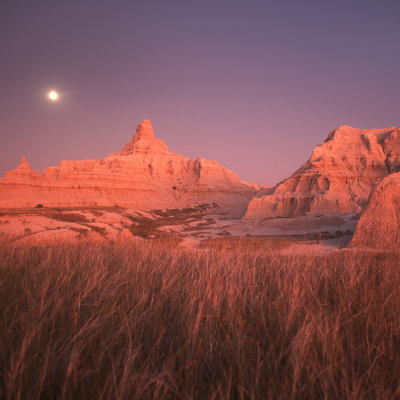
South Dakota’s continental climate bring with it four distinct seasons ranging from cold, dry winters to warm and semi-humid summers. Speaking of summer, the state’s average high temperatures are often close to ninety degrees before cooling off to near sixty degrees at night. It is not unusual for South Dakota to experience severe hot, dry summers with temperatures climbing above one hundred degrees several times a year!
Summers also bring frequent, sometimes severe, thunderstorms. The eastern part of the state is within “Tornado Alley,” and the state sees an average of thirty tornadoes each year. Winters are cold, with January temperatures averaging below freezing across the state and bring the possibility of severe blizzards and ice storms.
Various parts of the state have dangers associated with tornados, blizzards, ice storms, and extreme hot and cold temperatures, which should be something to consider if you plan to build a home after moving to South Dakota.
Moving to South Dakota Guide on Getting a Job in the Mount Rushmore State
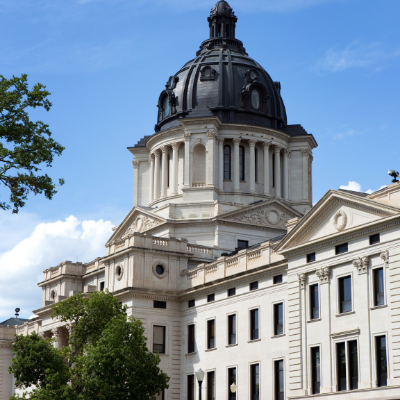
If you’re looking for a place to grow your career, consider moving to South Dakota! According to the South Dakota Department of Labor & Regulation’s findings, at the time of authoring this article, the state of South Dakota has seen a steady job growth rate compared to the rest of the United States. Moreover, in 2021, South Dakota the labor force showed signs that it was increasing compared to 2020 levels.
South Dakota continues to add more jobs, resulting in a steady state-wide unemployment rate of around 2.9%. Non-farm industries showing solid job gains included leisure and hospitality, retail trade, and government services.
What’s the situation on buying alcohol in South Dakota?

Who isn’t curious about how to toast moving to a new state! Under South Dakota state law, the sale of packaged liquor is prohibited on Sunday. It may be sold between 7:00 a.m. and 2:00 a.m., Monday through Saturday. Packaged beer and wine, on the other hand, may be sold between 7:00 a.m. and 2:00 a.m., any day of the week. Other than that, liquor laws in South Dakota are probably very similar to what you might already be used to.
What is there to do in South Dakota?
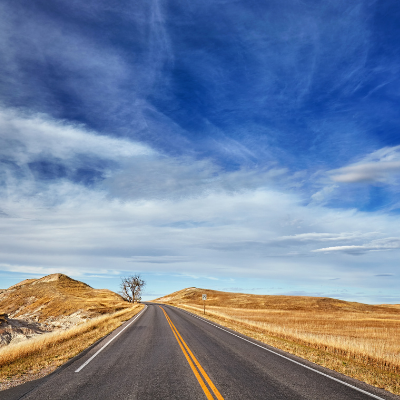
Hopefully you like being outside! South Dakota’s nickname, the Mount Rushmore State, references the national monument carved into the Black Hills in the southwestern part of the state. The entire Black Hills region is one you must add to your bucket list! In addition to this monument and surrounding natural beauty, fishing and hunting are popular outdoor activities across the state in addition to cycling and running.
Be sure to check out the annual Mount Rushmore marathon, the Tour de Kota, and the annual Sturgis Motorcycle Rally, just to name a few ways South Dakota takes advantage of its love of the outdoors.
Additionally, the state has a rich cultural history that mixes the original traditions American Indian Nations with that of European immigrants to create a unique identity that is celebrated across the state. In fact, one of the most famous of these immigrants, Laura Ingalls Wilder, is one of South Dakota’s best-known writers. Five of her ever-popular novels are based on her life growing up on a homestead near De Smet, South Dakota.
Another choice for entertainment is to head over to the state’s largest city, Sioux Falls, for culture, food, and fun. It might seem like a small city, but there is still a variety of fun and interesting things to do including the annual SculptureWalk, the Festival of Bands, and SiouxperCon. However, if you’re like us, we’re sure you’ll agree that outdoor South Dakota is the best. You’ll be in awe each and everything you step outside!
Important State Symbols in South Dakota

The state of South Dakota has over twenty-five official state symbols; we’ve included a few of our favorites here. The first, and most important, is the state’s name. What is now South Dakota was inhabited for thousands of years by various Native American tribes, including the Lakota and the Dakota Sioux Native American tribes, who include a large and visible part of the current population and historically dominated the territory.
The state bread is fry bread, and the flower is the American Pasque. Another one of our favorite South Dakota symbols is the state animal: the Coyote. Probably the most unexpected state symbol is the state instrument – the fiddle!
Lesser-Known FAQs About Moving to South Dakota
Q: What is the capital of South Dakota?
A: The capital of South Dakota is Pierre. Pierre is the second most populated city in South Dakota after Sioux Falls. Pierre was selected to be the capital of South Dakota due to its location in the geographic center of the state. With a population of just over 14,000, Pierre is the second-least populous state capitals in the United States, following Montpelier, Vermont! If you move to South Dakota, you’ll probably live in Sioux Falls or one of the surrounding communities.
Q: How do South Dakota’s public schools rank nationally?
A: According to a study by US News, South Dakota public high schools rank 46/50 in a national breakdown tracking state-by-state high school performance. While education quality can vary widely depending on where in the state you live, this report takes the weighted average of the state’s high school performance into consideration. Don’t forget that South Dakota is the fifth least populous and fifth most sparsely populated state, which contributes to that ranking, too!
Q: What kind of taxes can you expect to pay in South Dakota?
A: South Dakota does not have a state personal income tax, pension tax, personal property tax, or an inheritance tax making it one of the lowest taxed states in the country. The state’s sales tax rate is 4.5% and cities in South Dakota have the option of collecting a local sales tax of up to 3%, but most major cities only collect an extra 2%.
Across the state, the average effective property tax rate is equally low at 1.22%. That said, South Dakota is one of three states that still taxes groceries at the full state sales tax rate.
Q: What’s it like to vote in South Dakota?
A: To register to vote in South Dakota, you must be a United States citizen and live in South Dakota. You must also be eighteen years old on or before the next election and not currently serving a sentence for a felony conviction which includes imprisonment, served, or suspended, in an adult penitentiary system. Finally, you must not be judged mentally incompetent by a court of law. That said, you may register to vote at one of the following locations: the county auditor’s office, the driver’s license station, a city finance office, at public aid agencies, the Department of Human Services offices, and at military recruitment offices.
It’s important to note that in South Dakota primary elections, a voter is given only the ballot for the party which the voter is registered in, except for voters registered as an Independent or No Party Affiliation.
Q: What are the rules for switching your driver’s license in South Dakota?
A: If you have an out-of-state driver’s license, you can transfer it for a South Dakota license once you have spent twenty-four hours in the state and have secured a permanent address within the state. You’ll need proof of your identity, date of birth and lawful status, proof of your Social Security number, and two documents in your name less than one year old that prove your physical South Dakota address.
Q: When do you need to update your car plates in South Dakota?
A: If you have titled and licensed your vehicles in another state, you will be granted reciprocity when you come to South Dakota and will not have to pay any additional tax if your state’s tax rate is above South Dakota’s 4% tax rate. If a state with no tax or a lower tax rate than South Dakota’s 4%, then you will need to pay the additional tax rate to match the 4%. You have ninety days from your date of arrival to title and license your vehicle in South Dakota.
Q: What’s it like driving in South Dakota?
A: Like most state, the driving conditions in South Dakota are very different in urban and rural areas. South Dakota, in a tie with Indiana, came in at number 25 as the state with the worst drivers in America. Now, that doesn’t mean South Dakota drivers are always just average – it just means you can’t only look out the window at the scenic countryside!
Q: Does South Dakota have any walkable cities?
A: Of all cities in South Dakota, the best bet for having a walkable lifestyle is going to be in Sioux Falls, the largest city in South Dakota, but even that’s going to be difficult. The downtown is the most walkable and even has some public transportation and is bikeable, but overall, you’ll want a car to make the most of getting around this state.
Is South Dakota the Right State for You to Move?
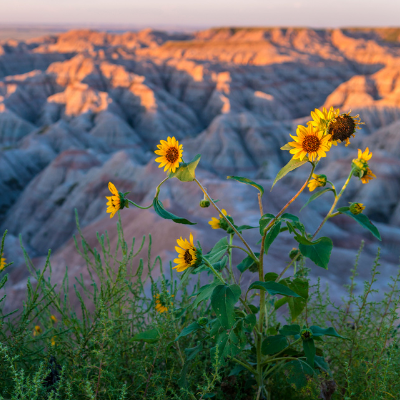
For those of you looking for lots of space, while enjoying living in a place with a rich history, South Dakota (and specifically the city of Sioux Falls) may be the right fit for you. The beautiful typography of South Dakota, low taxes, and growing economy all lend themselves into making life great in the Mount Rushmore State. However, natural disasters like blizzards, tornados, and extreme temperatures and middle of the pack schools prove that while exceptional, South Dakota isn’t perfect.



